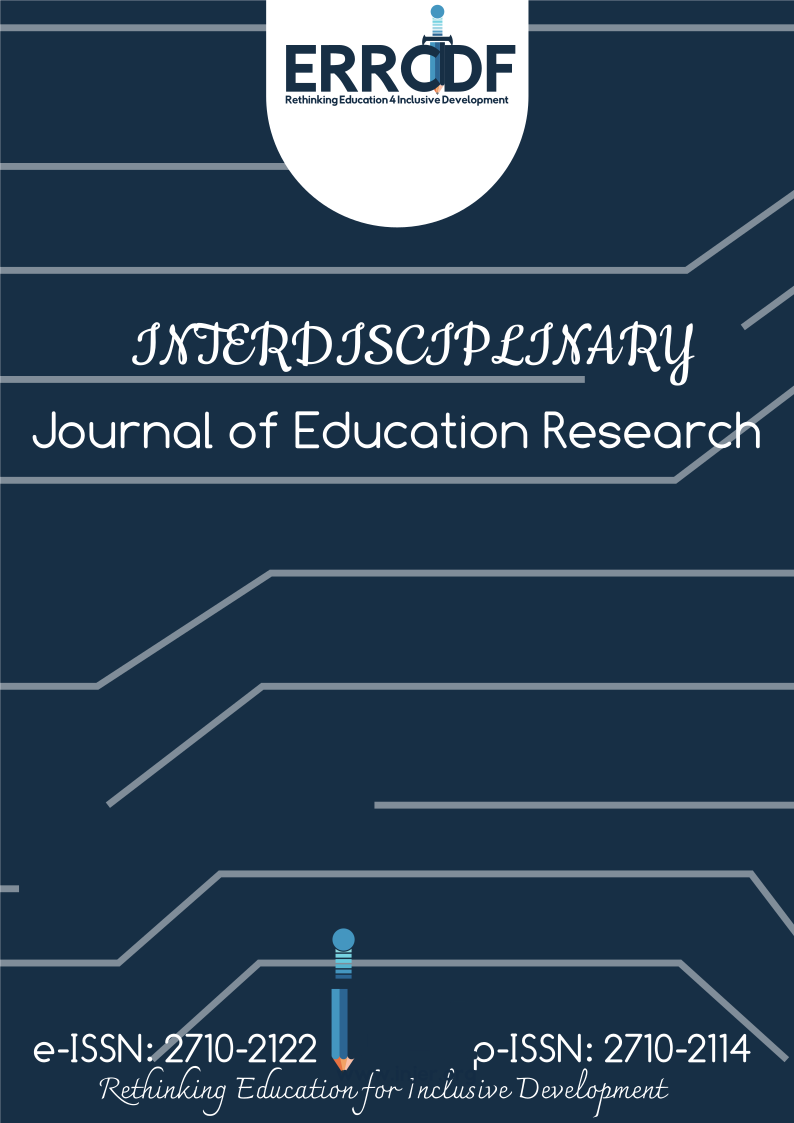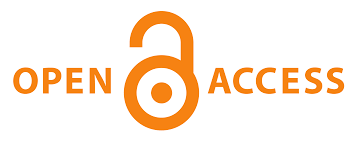Psychological well-being of adolescents living with albinism. A case of one school in Bizana, Eastern Cape, South Africa
DOI:
https://doi.org/10.38140/ijer-2025.vol7.s1.04Keywords:
Academic performance, albinism, bullying, inclusivity, psychological well-beingAbstract
In many parts of Sub-Saharan countries such as Mozambique, Tanzania, and Malawi, research indicates that people with albinism face discrimination, violence, and death due to a deficit of melanin (pigmentation), which causes visual impairment, skin damage, and health problems. To investigate how South African adolescents living with albinism (ALWA) enhance their psychological well-being, a qualitative study was conducted utilising semi-structured interviews with twelve purposively sampled participants aged 14 to 18 years from one special school in Bizana, Eastern Cape. Inclusive Education (IE) policies and Carol Ryff’s six-dimensional theory of psychological well-being guided this study. The school principal and the participants’ legal guardians granted consent to the researchers to interview the participants. Before data collection, the researchers obtained informed consent from the participants to be audio-taped during the interviews and ensured their confidentiality and privacy. Transcribed data were coded for the identification of themes, relying on Tesch’s six steps of thematic data analysis. Participants attributed their psychological well-being to the positive school environment, parental support, and the implementation of IE policies, which contributed to their self-esteem, sense of purpose, and academic performance. Furthermore, counselling, empowerment support groups, church involvement, and emotional support from their partners indicated resilience and positive coping strategies against bullying, depression, and rejection among ALWA. These findings inform educational officials about the need to devote more resources to special schools to align with the Sustainable Development Goals of 2030, ensuring the representation of people living with albinism in tertiary institutions and beyond.
References
Aborisade, R. A. (2021). “Why always me?” Childhood experiences of family violence and prejudicial treatment against people living with albinism in Nigeria. Journal of Family Violence, 36(8), 1081-1094. https://doi.org/10.1007/s10896-021-00264-7
Adah, R. O., & Adah, G. U. (2024). Perceived discrimination and other factors influencing self-esteem in persons with albinism in North Central Nigeria. Journal of Advocacy, Research and Education, 11(1), 77-86. https://doi.org/10.13187/jare.2024.1.77
Adelakun, O. S., & Ajayi, M. A. O. (2020). Eliminating discrimination and enhancing equality: A case for inclusive basic education rights of children with albinism in Africa. Nigerian Journal of Medicine, 29(2), 244-251. https://doi.org/10.4103/NJM.NJM_50_20
Albino Foundation. (2012). Albinism in Africa. http://albinofoundation.org/albinism/albinism-inafrica
Agyei, M. N., Boamah, M. J., Asamoah, A. K., & Donkor, F. (2020). Socio-cultural challenges and coping mechanisms of persons with albinism in Ghana. African Journal of Disability, 9, 1-9.
Ahmed, S. K. (2024). The pillars of trustworthiness in qualitative research. Journal of Medicine, Surgery, and Public Health, 2, 1–4. https://doi.org/10.1016/j.glmedi.2024.100051
Baker, C., Lund, P., Nyathi, R., & Taylor, J. (2010). The myths surrounding people with albinism in South Africa and Zimbabwe. Journal of African Cultural Studies, 22(2), 169–181. https://doi.org/10.1080/13696815.2010.491412
Burke, J., Kaijage, T. J., & John-Langba, J. (2014). Media analysis of Albino killings in Tanzania: A human rights perspective. Ethics and Social Welfare, 8(2), 117-134. https://doi.org/10.1080/17496535.2014.895398
Chirimbana, M., Shigwedha, M., & Rachel, A. (2024). Examining the psychological and psychosocial impact on mathematics learners with albinism in selected schools of the Oshawa region, Northern Namibia: A phenomenological inquiry. Open Journal of Social Sciences, 12(2), 149-167. https://doi.org/10.4236/jss.2024.122010
Clarke, S., & Beale, J. (2018). ‘Social marginalization and albinism’. In J. Kromberg & P. Manga (Eds.), Albinism in Africa: Historical, geographic, medical, genetic and psychosocial aspects (pp. 257–270). Elsevier Academic Press.
Creswell, J. W., & Creswell, J. D. (2017). Research design: Qualitative, quantitative, and mixed methods approach. Sage Publications.
Denzin, N. K., & Giardina, M. D. (Eds.). (2016). Qualitative inquiry and the conservative challenge. Routledge.
Department of Education. (2001). Education white paper 6: Special needs education: Building an inclusive education and training system. Government Printer.
Franklin, A., Lund, P., Bradbury-Jones, C., & Taylor, J. (2018). Children with albinism in African regions: Their rights to ‘being’ and ‘doing’. BMC International Health and Human Rights, 18, 2. https://doi.org/10.1186/s12914-018-0144-8
Gaigher, R. J., Lund, P. M., & Makuya, E. (2002). A sociological study of children with albinism at a special school in the Limpopo province. Curationis, 25, 4-11. https://doi.org/10.4102/curationis.v25i4.793
Gichuru, M. J. (2017). The interpretive research paradigm: A critical review of IS research methodologies. International Journal of Innovative Research and Advanced Studies, 4(2), 1-5.
Hargovan, H., & Rovashni, C. (2023). The lived experiences of persons with albinism in the Northern Cape, South Africa. African Journal of Social Work, 13(3), 155-166. https://doi.org/10.4314/ajsw.v13i3.4
Human Rights Council Advisory Committee. (2014). Report of the advisory committee on its 12th session. http://www.ohchr.org/EN/HRBodies/HRC/AdvisoryCommittee/Pages/AboutAC
Ikuomola, A. D. (2015). Socio-cultural conception of albinism and sexuality challenges among persons with albinism (PWA) in South-West Nigeria. An International Journal of Arts and Humanities, 4(2), 189–208. https://doi.org/10.4314/ijah.v4i2.14
Independent News. (2019, 28 September). Racial discrimination against people living with albinism. Independent News. https://www.scoop.co.nz/stories/WO1909/S00200/racialdiscrimination-against-people-with-albinism.htm
Kassah, A. (2012). Abuse of disabled children in Ghana. Disability and Society, 27(5), 689–701. https://doi.org/10.1080/09687599.2012.673079
Kromberg, J. G. R. (2018). Psychosocial and cultural aspects of albinism. In J. Kromberg & P. Manga (Eds.), Albinism in Africa: Historical, geographical, medical, genetic and psychosocial aspects (pp. 171–201). Elsevier Academic Press.
Lazarus, R. S., & Folkman, S. (1984). Stress, appraisal, and coping. Springer Publishing Company.
Lincoln, Y. S., & Guba, E. G. (1985). Naturalistic inquiry. Sage Publications.
Longstaff, P. H., Koslowski, T. G., & Geoghegan, W. (2013). Translating resilience: A framework to enhance communication and implementation. In Fifth Resilience Engineering Association Symposium (pp. 1–8). Soesterberg, The Netherlands; 25–27 June.
Lund, P. M., & Gaigher, R. (2002). A health intervention programme for children with albinism at a special school in South Africa. Health Education Research, 17(3), 365–372. https://doi.org/10.1093/her/17.3.365
Lund, P., & Lych, P. (2011). Education of children and young people with albinism in Malawi. Final Report. http://www.birmingham.ac.uk/research/activity/education/projects/albinism-inmalawi.aspx
Magasu, O., Muleya, G., & Mweemba, L. (2020). Pedagogical challenges in teaching civic education in secondary schools in Zambia. International Journal of Science and Research, 9(3), 1483–1488.
Mather, L., Gurayah, T., Naidoo, D., Nathoo, H., Feresu, F., Dlamini, N., ... & Patel, Z. (2020). Exploring the occupational engagement experiences of individuals with oculocutaneous albinism: An eThekwini District study. South African Journal of Occupational Therapy, 50(3), 52–59. http://dx.doi.org/10.17159/2310-3833/2020/vol50no3a6
Msomi, V. D. (2014). Stark white: Experiences of learners with albinism (LWA) in primary and secondary schools in the Umlazi District [Doctoral dissertation, University of KwaZulu-Natal].
Mswela, M. (2017). Violent attacks against persons with albinism in South Africa: A human rights perspective. African Human Rights Law Journal, 17(1), 114–133. https://doi.org/10.17159/1996-2096/2017/v17n1a6
Mostert, M. P., & Weich, M. M. (2017). Albinism in Africa: A proposed conceptual framework to understand and effectively address a continental crisis. In C. Ngwenya, I. Grobbelaar-du Plessis, H. Combrinck, & N. Kamga (Eds.), African disability rights yearbook (Vol. 5, pp. 101–117). Pretoria University Law Press.
Ndomondo, E. (2015). Educating children with albinism in Tanzanian regular secondary schools: Challenges and opportunities. International Journal of Educational Research, 3(6), 389–400.
Nyerere, L. (2022). Different in colour, equal in rights: Discrimination as a link to the violation of other rights of persons with albinism. Kabarak Law Review, 1, 1–37. https://doi.org/10.58216/klr.v1i.239
Phatoli, R., Bila, N., & Ross, E. (2015). Being black in a white skin: Beliefs and stereotypes around albinism at a South African university. African Journal of Disability, 4(1). http://dx.doi.org/10.4102/ajod.v4i1.106
Office of the United Nations High Commissioner for Human Rights. (2013). Ministry of Education and Training. (2012). The Eswatini Education and Training Sector Policy. Mbabane: Government Printers.
Ojedokun, I. M. (2018). Effects of stigmatisation on psychosocial and health well-being of people living with albinism in South-West Nigeria. African Journal of Social Work, 8(1), 31-38.
Owoeye, S. M., Emaimo, J., Ottun-Emaimo, O., & Adekalu, S. O. (2023). Inclusive education for children with albinism: Unleashing the prime enabler. International Journal of Academic Research in Progressive Education and Development, 12(1), 1309-1316. http://dx.doi.org/10.6007/IJARPED/v12-i1/16483
Rielly, A. C. (2020). Mental health of children with albinism: Associated risk and resilience factors. University of Johannesburg.
Reimer-Kirkham, S., Astle, B., Ero, I., Imafidon, E., & Strobel, E. (2020). Mothering, albinism and human rights: The disproportionate impact of health-related stigma in Tanzania. Foundations of Science, 27, 719–740. https://doi.org/10.1007/s10699-020-09701-0
Rooryck, C., Morice, F., Lacombe, D., Taieb, A., & Arveiler, B. (2009). Genetic basis of oculocutaneous albinism. Expert Review of Dermatology, 4(6), 611–622. https://doi.org/10.1586/edm.09.53
Rosenberg, M., Schooler, C., Schoenbach, C., & Rosenberg, F. (1995). Global self-esteem and specific self-esteem: Different concepts, different outcomes. American Sociological Review, 60(1), 141–156. http://dx.doi.org/10.2307/2096350
Ryff, C. D. (1989). Happiness is everything, or is it? Explorations on the meaning of psychological well-being. Journal of Personality and Social Psychology, 57(6), 1069–1081.
Ryff, C. D., & Keyes, C. L. M. (1995). The structure of psychological well-being revisited. Journal of Personality and Social Psychology, 69(4), 719–727.
Tambala-Kaliati, T., Adomako, E. B., & Frimpong-Manso, K. (2021). Living with albinism in an African community: Exploring the challenges of persons with albinism in Lilongwe District, Malawi. Heliyon, 7(5), e07034. https://doi.org/10.1016/j.heliyon.2021.e07034
Tajfel, H., & Turner, J. C. (1979). An integrative theory of intergroup conflict. In W. G. Austin & S. Worchel (Eds.), The social psychology of intergroup relations (pp. 33–47). Brooks/Cole.
Tambala-Kaliati, T., Adomako, E. B., & Frimpong-Manso, K. (2020). Lived experiences of persons with albinism in Lilongwe District [Doctoral dissertation, University of Ghana].
Taylor, J., Bradbury?Jones, C., & Lund, P. (2019). Witchcraft?related abuse and murder of children with albinism in Sub?Saharan Africa: A conceptual review. Child Abuse Review, 28(1), 13–26. https://doi.org/10.1002/car.2549
Thwala, S. K., Edeh, M. O., Okeke, C. I., & Dlamini, Z. C. (2021). Effects of school-based support strategies on learning conditions of school children with albinism in Eswatini primary schools. South Africa International Conference on Education, 386–397.
Tuso, P. (2015). Strategies to increase physical activity. The Permanente Journal, 19(4), 84–88. https://doi.org/10.7812/TPP/14-242
United Nations General Assembly. (2019). Women and children impacted by albinism: Report of the independent expert on the enjoyment of human rights by persons with albinism (A/HRC/43/42). Retrieved from https://undocs.org/A/HRC/43/42
UNESCO. (1994). Salamanca statement in the final report of the World Conference on Special Needs Education: Access and quality. UNESCO, Ministry of Education and Science.
Vernon, K. M., Oliver, M., & Annie, P. (2021). Challenges pupils with albinism face in selected schools in Luapula Province, Zambia. International Journal of Research and Innovation in Social Science (IJRISS), 8, 395–401.
Weiten, W. (2022). Psychology: Themes and variations. South African edition (4th ed.). Australia: Cengage Learning.
World Health Organization. (2006). The World health report 2006: Working together for health. Geneva: World Health Organization. https://www.who.int/whr/2006/en/
Downloads
Published
How to Cite
Issue
Section
License
Copyright (c) 2025 Azame Mqokweni, Mvuyisi Notole, Jabulani Gilford Kheswa

This work is licensed under a Creative Commons Attribution 4.0 International License.










